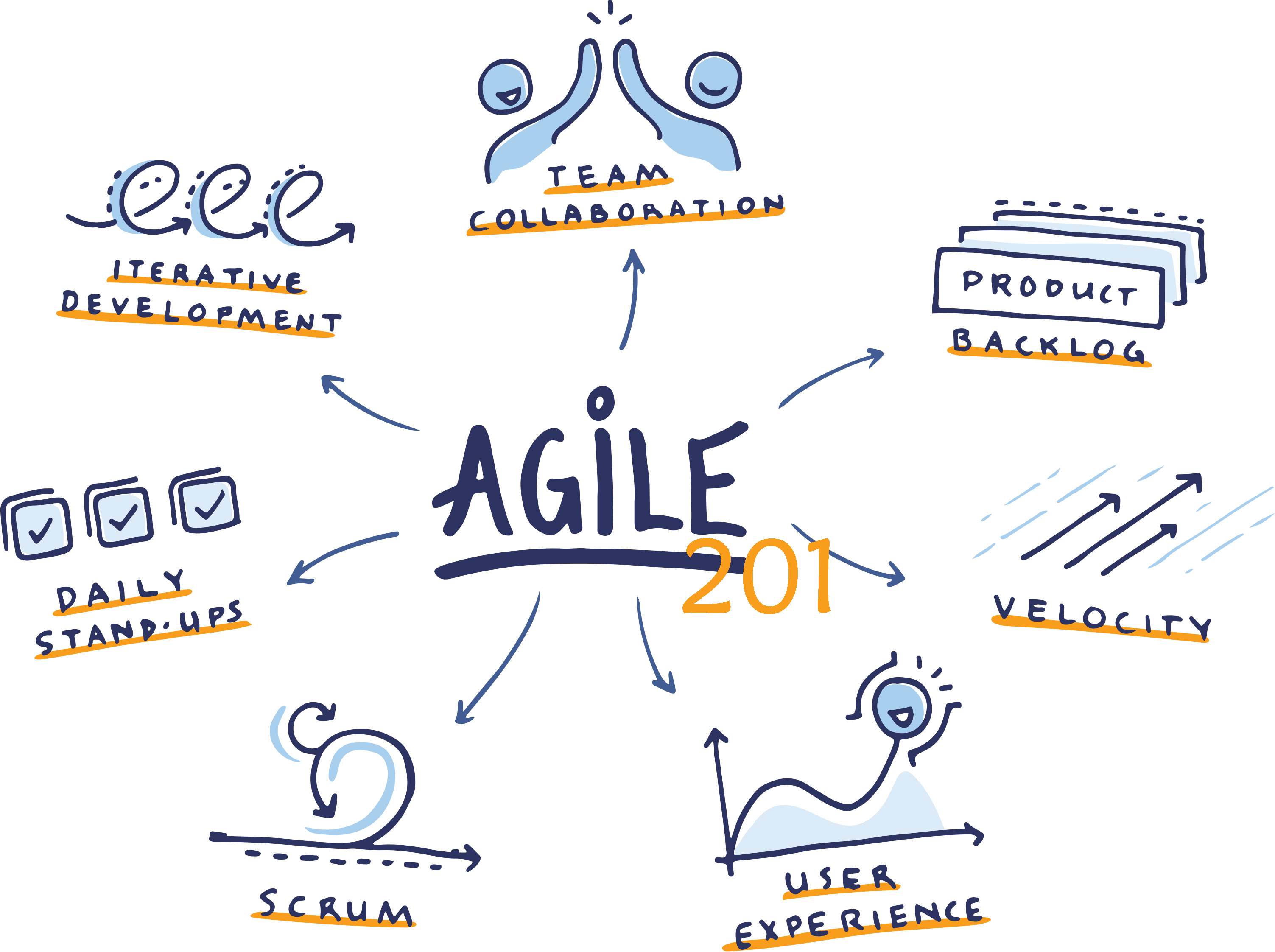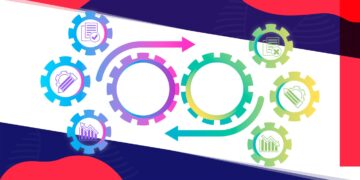Table of Contents
01
of 09
Agile History & Principles
Agile is a project management methodology that is all about staying flexible, working together, and making progress in small chunks. Instead of tackling a whole project individually, Agile breaks it down into bite-sized pieces called sprints or iterations. This approach allows teams to adjust and keep improving the product based on what they learn.
It was created in the early 2000s by a group of software developers who were frustrated with traditional project management methods that were too rigid. The long delay between business needs and technology delivery often led to cancelled projects. By the time the product was finished, requirements had changed, making the final result outdated and useless to the customer. Traditional methods like the Waterfall model were too slow and didn’t take advantage of how quickly software could be updated.

02
of 09
The Agile Manifesto
The Agile Manifesto was created from the desire of wanting a more flexible and collaborative approach that could handle changes and deliver results faster. Here are its twelve principles:
- Customer Satisfaction: Our highest priority is to satisfy the customer through early and continuous delivery of valuable software.
- Welcome Changing Requirements: Welcome changing requirements, even late in development. Agile processes harness change for the customer’s competitive advantage.
- Frequent Delivery: Deliver working software frequently, from a couple of weeks to a couple of months, with a preference to the shorter timescale.
- Collaboration: Business people and developers must work together daily throughout the project.
- Motivated Individuals: Build projects around motivated individuals. Give them the environment and support they need, and trust them to get the job done.
- Face-to-Face Communication: The most efficient and effective method of conveying information to and within a development team is face-to-face conversation.
- Working Software: Working software is the primary measure of progress.
- Sustainable Development: Agile processes promote sustainable development. The sponsors, developers, and users should be able to maintain a constant pace indefinitely.
- Technical Excellence: Continuous attention to technical excellence and good design enhances agility.
- Simplicity: Simplicity—the art of maximizing the amount of work not done—is essential.
- Self-Organizing Teams: The best architectures, requirements, and designs emerge from self-organizing teams.
- Reflect and Adjust: At regular intervals, the team reflects on how to become more effective, then tunes and adjusts its behavior accordingly.
Agile isn’t a one-size-fits-all method: it includes different approaches and frameworks (like for example Scrum, XP, Kanban, Lean, etc) to suit different project needs.
Although each team has its own unique practices and tools, it all shares Agile’s core principles and values. This allows the teams to pick the approach that best matches their goals and working style.
We’ll explore the Scrum framework, one of the most popular options and widely used in many projects at Stellaxius.
03
of 09
Scrum Framework
The Scrum framework is a specific approach within the Agile methodology designed to manage and complete complex projects. It divides work into small chunks called sprints, usually lasting two to four weeks, with regular check-ins to keep things on track. Scrum uses roles like Scrum Master and Product Owner to guide the team and prioritize tasks. It fits with Agile by focusing on steady progress, teamwork, and the ability to adapt quickly, helping deliver value incrementally.
Here are some of its many benefits
- Flexibility: Scrum’s short sprints let teams adjust quickly to changes and new ideas.
- Transparency: Regular check-ins and updates inform everyone about the project’s progress.
- Faster Delivery: Breaking work into sprints means you get working software more often, speeding up the time it takes to release new features.
- Better Collaboration: Daily stand-ups and sprint reviews boost teamwork and communication.
- Risk Management: Frequent feedback helps catch and fix problems early, lowering the risk of major issues.
- Customer Satisfaction: Regular updates and feedback ensure the product meets the customer’s needs.
Agile is great for developing new software because it’s flexible and adapts to changes. But how does it stack up against the more traditional approach, like Waterfall?
04
of 09
Agile vs Waterfall
Waterfall is a traditional project management method that follows a linear, step-by-step approach. Each phase of a project must be completed before proceeding to the next.
It works best for projects with clear, fixed requirements and predictable paths, such as construction, manufacturing, or large-scale software projects with stable needs. It’s ideal when changes are minimal, and timelines are fixed.
Agile vs. Waterfall: A Simple Comparison
- General approach:
- Agile: Works in short, flexible cycles called sprints. Teams make continuous improvements and adjust based on feedback.
- Waterfall: Follows a strict, step-by-step process. Each phase must be completed before moving to the next.
- Flexibility:
- Agile: Highly adaptable. Changes can be made at any time based on new information or feedback.
- Waterfall: Less flexible. Changes are difficult and costly once a phase is completed.
- Customer Involvement:
- Agile: Regularly involves customers throughout the project for ongoing feedback and adjustments.
- Waterfall: Involves customers mainly at the beginning and end of the project.
- Delivery:
- Agile: Delivers parts of the project incrementally, allowing for early releases and regular updates.
- Waterfall: Delivers the final product all at once after all phases are complete.
- Risk Management:
- Agile: Risks are managed continuously with regular reviews and adjustments.
- Waterfall: Risks are managed upfront, but issues may only be discovered late in the process.
- Documentation:
- Agile: Focuses more on working software and less on extensive documentation.
- Waterfall: Emphasizes detailed documentation at each phase.
Are you ready to step outside of the traditional approach?
05
of 09
Challenges of implementing or transitioning to Agile
Transitioning to Agile can be a game-changer for your team, but it comes with its own challenges. Here’s a list of some common obstacles that you might find and also some tips on how to mitigate them:
- Learning Curve: Transitioning to Agile can be a bit of a hurdle. Teams might find it challenging to adapt to new methods and roles, requiring time to get comfortable with the Agile way of working.
- Mindset Shift: Moving to Agile often means rethinking how project management and teamwork should work. It requires a shift from traditional practices to a more collaborative and flexible approach, which can take some getting used to.
- Maintaining Consistency: Agile’s flexible approach means that project goals and plans can change frequently. This constant evolution can make it challenging to keep everyone focused on the same objectives and ensure that progress is consistently tracked.
- High Engagement Demands: Agile involves frequent meetings and ongoing input from team members and stakeholders. This can put a strain on resources, as everyone needs to stay actively engaged and contribute regularly.
- Scope Creep: Agile’s adaptability allows for ongoing changes and new features to be added. While this can be beneficial, it also means there’s a risk of the project expanding beyond its original goals if changes aren’t carefully controlled.
06
of 09
Tips for a Smoother Transition
- Invest in Learning: Make sure your team gets the right training on Agile. This doesn’t necessarily mean everyone needs to take a formal course; it could include workshops, coaching, or online resources.
- Example: Arrange for a series of in-house workshops led by an Agile coach. These could feature interactive sessions on Agile principles, hands-on exercises, and Q&A to address specific team concerns.
- Start with a Test Run: Try Agile on a smaller scale first, like with a pilot project or a small team. This lets you work out any kinks and make adjustments before rolling it out more broadly.
- Example: Use Agile to manage a small, low-risk project or a single team, such as developing a new feature. This allows you to see how Agile works in practice and refine your approach before applying it to larger projects.
- Keep Communication Open: Ensure everyone knows their roles and understands how Agile works. Regular, clear communication helps set the right expectations and keeps the team aligned.
- Example: Hold daily stand-up meetings where team members quickly discuss what they’re working on and any issues they’re facing. This helps everyone stay informed and aligned on goals.
- Set Clear Objectives: Decide what you want to achieve with Agile and outline specific goals. This helps everyone stay focused and lets you track how well the transition is going.
- Example: Set goals like “Reduce time to market for new features by 20%” or “Increase customer feedback integration by holding bi-weekly review meetings.” This provides clear targets for measuring success and progress.
- Test Different Approaches: Agile isn’t a one-size-fits-all solution. Experiment with various Agile practices and frameworks to see what works best for your team and projects.
- Example: Try out different Agile frameworks like Scrum, Kanban, or XP on different projects or teams. For instance, use Scrum for one project to see if its structured sprints work well, while using Kanban for another project to test its flow-based approach.
- Give It Time: Recognize that adapting to Agile takes time. Be patient as your team learns and adjusts to the new way of working. It’s a gradual process and may take a while to fully embrace Agile practices.
- Example: If daily stand-ups or sprint reviews take longer at first, understand that this is part of the adjustment period. Provide support and encouragement as the team becomes more comfortable with Agile practices.
07
of 09
Netflix’s Transition to Agile: A Success Story
Netflix’s transition to Agile was key in adapting to the fast-paced streaming industry and meeting the ever-growing expectations of its users. As demands for constant new content and seamless experiences grow, Agile provides the necessary framework for success.
Reasons for Transition
- User Expectations: Users demanded frequent updates and new features, which requires a fast and continuous content delivery.
- Scalability and Speed: To maintain its competitive edge, Netflix needed a methodology that supported scaling and quick release cycles.
Key Strategies Adopted
- Cross-functional Teams: Enhanced communication and decision-making across the company by combining different expertise.
- Incremental Feature Releases: Allowed gradual rollouts, minimizing risk and enhancing user feedback.
- Continuous Integration and Deployment: This way, new features and fixes were added quickly and easily, keeping the system smooth and responsive to what users needed.
- Data-driven Decisions: Netflix analyzed user data in real time to understand what people liked. This allowed them to adjust their content quickly to match user preferences, making sure the platform always offered relevant and engaging content.
- Component-Based Architecture: Netflix built their platform using separate, self-contained parts. Each part could be developed, updated, and scaled on its own, which made the system more flexible and efficient, and allowed for changes without disrupting the whole service.
Outcomes and Lessons Learned
- Empowered Teams: Autonomy in teams accelerated development and sparked innovation.
- Embracing Experimentation: Fostered a culture of testing and iterating on new ideas, reducing risk and maximizing creativity.
- Adaptability: Reinforced the ability to quickly respond to market changes and technological advancements.
- Focus on the user: Maintained the focus on user experience, ensuring offerings remained relevant and engaging.
Netflix’s Agile transformation shows how important it is to stay flexible and focused on user needs. By embracing continuous learning and experimentation, Netflix has managed to stay ahead in a fast-changing industry, proving that Agile methods are key to long-term success and innovation.
08
of 09
The Future of Agile with AI and Machine Learning
Last but not least, we couldn’t help to bring AI to the table on this article. Technology is evolving at a fast pace, and Agile and AI are evolving right along with it. Both AI and Agile are essential tools for driving digital transformation for our customers.
AI enhances Agile teams by streamlining processes, automating tasks, and offering valuable insights to keep pace with fast-changing environments.
Check out how AI is transforming Agile practices:
- Automated Testing and Quality Assurance: AI-driven tools can automate complex testing processes by generating test cases, executing them, and identifying issues. Machine learning algorithms can analyze code and predict potential defects, improving software quality and reducing manual testing efforts.
- Predictive Analytics for Project Planning: Machine learning models can analyze historical data to forecast project timelines, resource needs, and potential risks. This allows Agile teams to make more accurate predictions and proactively address issues before they impact the project.
- Enhanced Task Management: AI-powered project management tools can optimize task prioritization and resource allocation. These tools use machine learning to analyze team performance, workload, and project requirements, suggesting the most efficient ways to manage tasks and balance resources.
- Natural Language Processing (NLP) for Communication: AI’s NLP capabilities can process and analyze team communications, project documentation, and user feedback. This can help automate report generation, improve clarity in communication, and ensure that requirements are accurately captured and addressed.
- Adaptive Planning and Decision-Making: Machine learning algorithms can help Agile teams adapt their plans based on real-time data and changing conditions. For example, AI can analyze ongoing project metrics to suggest adjustments to workflows or strategies, enhancing the team’s ability to respond to new challenges.
- Intelligent Insights and Recommendations: AI tools can provide actionable insights by analyzing vast amounts of project data. These insights can highlight trends, suggest improvements, and offer recommendations for optimizing Agile practices and processes.
09
of 09
How Stellaxius and Agile Can Help Your Company
At Stellaxius, we use agile methodologies to ensure every project delivers the highest return on your investment. Our agile approach is designed to enhance your business processes, boost efficiency, and achieve impactful results.
Why Choose Stellaxius?
- Focused Assessment: We start with a targeted evaluation of your current processes and technology to identify key areas for improvement and streamline workflows effectively.
- Simplifying Processes: Our team refines and optimizes your processes, aligning them with your strategic goals through agile principles for greater efficiency.
- KPI Development and Monitoring: We help set and track key performance indicators (KPIs) that drive success. Regular feedback ensures that goals are met and necessary adjustments are made.
- Iterative Releases and Feedback: We manage your project in iterative cycles using agile practices. Each release incorporates feedback and adjustments, enabling continuous improvement and swift adaptation to changes.
- Training and Adoption: Our approach includes training for your team to ensure smooth technology adoption. We follow a strategic adoption plan, facilitating changes to business processes and validating the results of the transformation.
- Expert Guidance: Our consultants, with up-to-date Salesforce and Project Management certifications, provide expert support to effectively manage your projects and deliver optimal outcomes.
- Future-Ready Solutions: We implement processes and tools that address future business challenges, ensuring your solutions remain adaptable and scalable.
- Enhanced ROI and Efficiency: By applying agile methodologies, we aim to maximize your return on investment and reduce the time needed to achieve break-even, making your technology investments more valuable.






